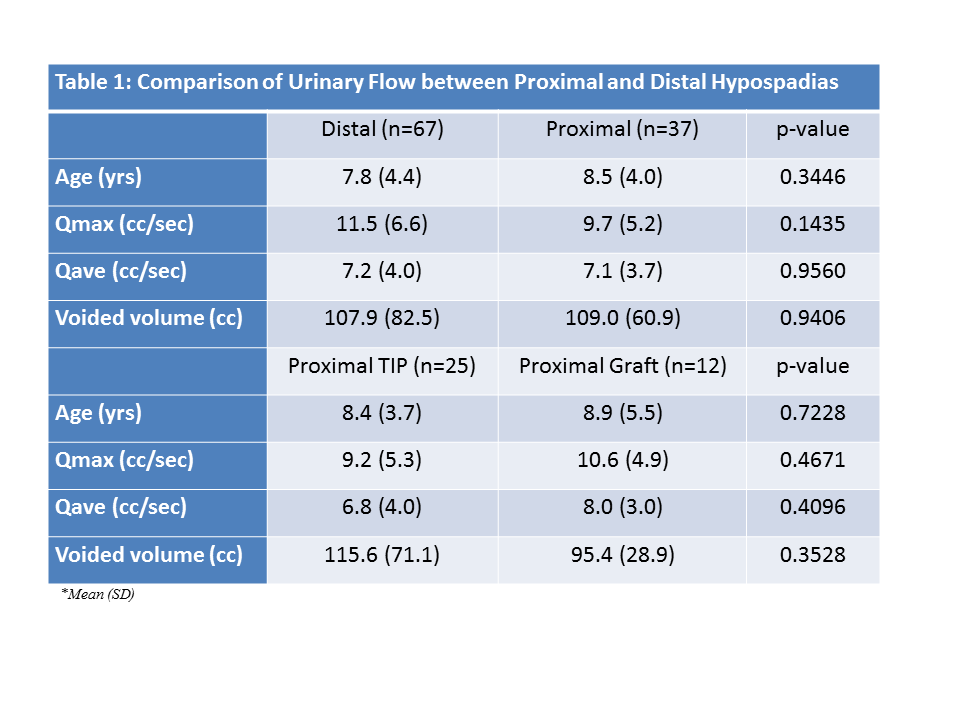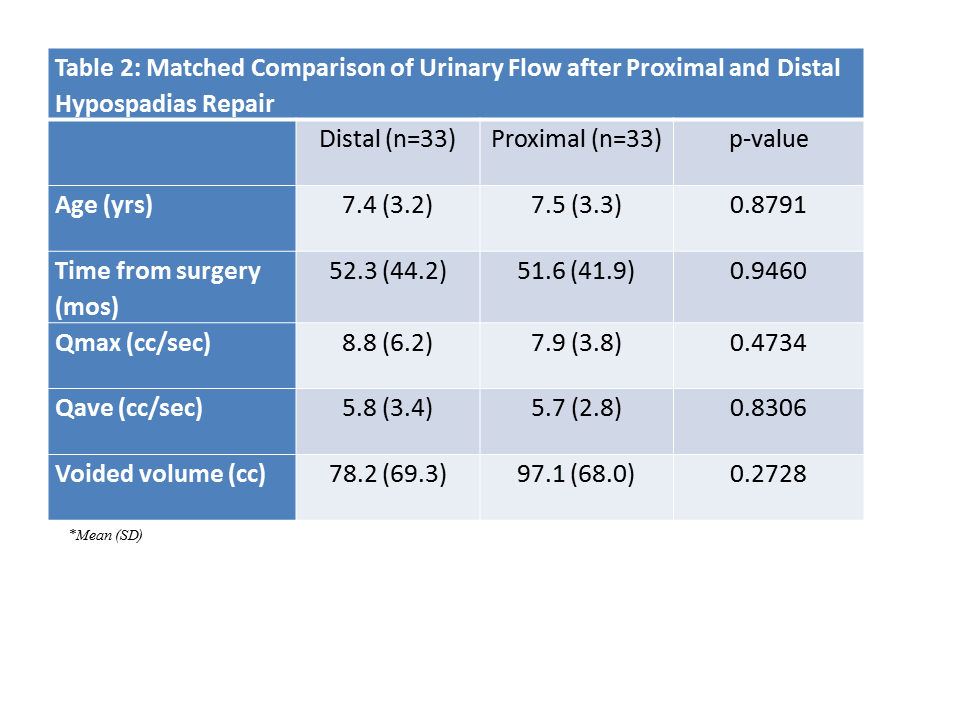-->
|
Back to 2014 Fall Congress Meeting Abstracts
A COMPARISON OF UROFLOWS IN BOYS FOLLOWING PRIMARY DISTAL TIP, PROXIMAL TIP AND PROXIMAL 2-STAGE GRAFT REPAIRS
Gwen M. Grimsby, MD1, Nicol Corbin Bush, MD2, Warren T. Snodgrass, MD2.
1UT Southwestern Medical Center/Children's Medical Center, Dallas, TX, USA, 2PARC Urology, Frisco, TX, USA.
A COMPARISON OF UROFLOWS IN BOYS FOLLOWING PRIMARY DISTAL TIP, PROXIMAL TIP AND PROXIMAL 2-STAGE GRAFT REPAIRS
Introduction:
There are sparse uroflow data following either TIP or 2 –stage graft primary hypospadias repairs. It has been postulated the TIP neourethra is relatively inelastic, resulting in 2 assumptions: that the “long TIP” for proximal repair adds greater resistance to urinary flow than distal TIP, and that graft repairs should have better uroflow parameters than TIPs. We report uroflow results in patients after primary distal and proximal TIP, and proximal 2-stage prepuce and oral graft repairs.
Materials and Methods:
Voided volume, and maximum (Qmax) and average (Qave) flow rates were obtained in toilet trained boys after primary hypospadias repair and prospectively entered into a database. We first compared these parameters in all available patients. Because flow rates are influenced by patient age and interval from surgery, we also performed analysis of age-matched distal and proximal patients, adjusting for follow-up.
Results:
There were 104 patients with uroflow data obtained a mean of 35 months (2-174) after primary hypospadias repair at mean age of 8 years (SD 4). Table 1 compares distal to proximal repairs, and proximal TIP to proximal grafts. There was no significant difference in any parameter between these patients.
Table 2 reports results after matching for age and interval after surgery, which could be done for 66 of the 104 patients. Of the 33 proximal repairs, 24 were TIP. There were no significant differences in uroflow parameters when accounting for age and postoperative interval.
Conclusions:
Our data did not show the expected difference in Qmax and Qave between distal and proximal hypospadias repairs, despite the longer neourethra in the latter group. There were also no differences seen between tubularized urethral plates and grafts. These results suggest the neourethra created by these techniques provides similar urinary function.
 
Back to 2014 Fall Congress Meeting Abstracts
|



